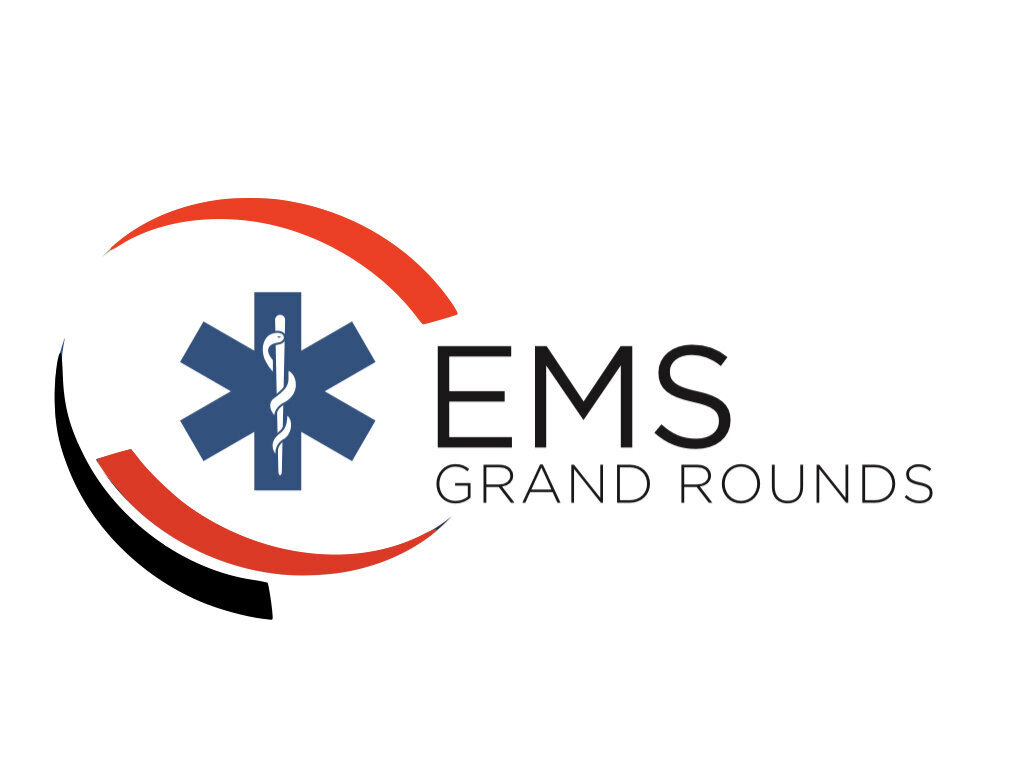October 13, 2016
We're off!
The inaugural EMS Grand Rounds is in the can. We had a few bumps as you might expect, but I think we're off to a good start. The goal in the future is to have each of these recorded for easy reference... but it just didn't happen this time. But here are the synopses
Walt Lubbers: Naloxone- An illustrated love story
Drug OD is a huge problem, and kills more people in Kentucky than car accidents, fires, shootings, stabbings, and drownings combined. Opiate overdose kills by suppressing respirations and eventual anoxic injury, so if you fix airway and breathing, you've solved the problem. Naloxone is effective, and the oft-cited adverse events (agitation, seizures, pulmonary edema) either are overstated or are probably a result of the patient being hypoxic, hypercarbic, and apneic, rather than from the naloxone. If you want to make side effects and the withdrawal state you've going to throw your patient into, use a smaller dose (start 0.04 mg IV, 1/10 of the normal starting dose, titrate in every 30 sec to regain respiratory status) or a different route (2 mg intranasal, 2 mg inhaled as a nebulized solution, etc). If you do reverse a person and they are of normal mental status (A&O x whatever AND able to understand that they could die if they don't go to the hospital), then you can't force them to go. BUT they also are not really likely to die, at least based on four studies of hospital, coroner's office, and EMS reports from people who left AMA after getting naloxone. But only making the antidote available if you call 911 is needlessly killing a lot of people, and if we want to save more lives, we've got to take a lesson from OHCA and get the tools in the hands of the people who are first on scene. Take home naloxone is effective, safe, cheap, and easy to use.
“Barriers to public use naloxone are based on morality and inertia rather than medical science.”
This isn't us, but check out this episode of the WildcastEM Podcast where we argue the benefits of public use naloxone:
Dr. Roger Humphries: Seizures in the Prehospital Arena
Seizures are common and come in many different flavors, and can make you do anything from twitch an arm (partial seizure) to make you act weird but not unconscious (complex partial seizure) to briefly go out for a few seconds (petit mal seizure) to go unconscious and move your arms and legs uncontrollably (gran mal), or can just make you unconscious without overt signs (subclinical status epilepticus). Withdrawal syndromes account for probably 20-40% of seizures we see in the ED (and in EMS). While not all spells are true seizures, about 10% of people who have non-epileptic spells ("pseudoseizures") also have epileptogenic seizrues, and it can be very hard to differentiate the two without an EEG, so probably don't try- benzodiazepines treat both. Status epilepticus is defined as a seizure lasting more than 5 minutes- so unless you witness it at the start, almost everybody that EMS finds that is actively seizing is in status as a rule and needs treatment. Benzodiazepines are the first line drugs for ongoing seizures
Lorazepam (Ativan) 4mg IV for adult
0.1mg/kg IV for child-may repeat 1x
Diazepam (Valium) 10mg IV for adult
0.2mg/kg IV for child-may repeat 1x
Midazolam (Versed) 10mg IM for adult
0.3mg/kg IV for child (up to 10mg)
Rectal diazepam 0.5mg/kg
Intranasal midazolam 0.3mg/kg (1/2 in each nostril)
A recent study (RAMPART, www.nejm.org/doi/full/10.1056/NEJMoa1107494?query=featured_home) showed IV Lorazepam stopped seizures a little faster once the patient got the drug, but the time difference was made up for because it was faster to give IM Midazolam, and the overall effect was that IM Midaz seemed at least as good if not better than IV Lorazepam. Trials are currently underway to determine what the next best drug to give if benzos fail to stop the seizure (ESETT, https://nett.umich.edu/clinical-trials/esett). Febrile seizures are common among children between 6 months and 6 years old, and while their origin isn't entirely clear, there doesn't seem to be a way to really prevent them (such as with fever control, etc). But they also are generally not dangerous, which is good news for parents.
“Nearly 50% of parents who witness a child’s febrile seizure believe their child is dying.”
David Fifer: BVM better
Dr. Sam Corbo: SVT in the prehospital setting
Have the patient blow into a syringe for 20 seconds, then lean them back so that legs are 45 degrees

